More great titles from Pavilion Books
Tap on the below titles to read more
 |  |  |
The Gentle Art of Quilt-Making
Jane Brocket | Merchant & Mills Sewing Book
Carolyn Denham & Roderick Field | Lullaby Knits
Vibe Ulrik Sondergaard |
| Available as: | Available as: | Available as: |
| Hardback | Hardback | Hardback |
| eBook | eBook | eBook |
 @LoveCrafts_CB
@LoveCrafts_CB
 LoveCrafts HQ
LoveCrafts HQ
www.pavilioncraft.co.uk
easy to make!
Curtains & Blinds

easy to make!
Curtains & Blinds
Expert advice, techniques and tips for window treatments
consultant Wendy Baker

First published in the United Kingdom in 2010 by
Collins & Brown
1 Gower Street
London WC1E 6HD
An imprint of Pavilion Books Company Ltd
www.pavilionbooks.com
Twitter: @pavilioncraft
Copyright Collins & Brown 2010
All rights reserved. No part of this publication may be reproduced, stored in a retrieval system, or transmitted in any form or by any means, electronic, mechanical, photocopying, recording or otherwise, without the prior permission of the copyright owner.
Main contributor: Kate Haxell
First published as an eBook in 2014
ISBN 978-1-909397-81-1
Also available as harback
ISBN 978-1-84340-572-6
This book can be ordered direct from the publisher at
www.pavilionbooks.com, or try your local bookshop.

Whatever the craft, we have the book for you just head straight to Collins & Brown crafty HeadQuarters!
LoveCrafts is the one-stop destination for all things crafty, with the very latest news and information about all our books and authors. It doesnt stop there...
Enter our fabulous competitions and win great prizes Download free patterns from our talented authors Collect LoveCrafts loyalty points and receive special offers on all our books
Join our crafting community at LoveCrafts we look forward to meeting you!

CONTENTS
Introduction
To some people the thought of making their own curtains might seem quite daunting, but as long as you know how to use a sewing machine, can cut straight lines with a pair of scissors and thread a needle you are halfway there.
You dont need to make the whole process complicated, start with a basic pair of unlined curtains for say, a family room or kitchen. When you realise how quick and easy they were to make you can then venture on to the next step by adding lining, and even put a trimming on the hem for the more important rooms.
Try to read the book step by step, as it was designed, without skipping bits that you know, or think you know, because that way you will get a clear picture of how to approach the task without panicking. Lets face it, a pair of curtains are only straight pieces of fabric sewn together anyone can do that.
Of course, it can get much more complicated the more you add on but again take it in your stride, dont tackle anything too involved until you are more confident. Use a plain fabric to start with and then progress to a printed fabric, as pattern matching can be a bit of a challenge even for me.
Blinds are very popular and cheaper on the whole, because you dont need as much fabric as you do for curtains. It is very important to make sure that you take accurate measurements. Always use a metal retractable tape measure (metre rule or folding ruler) and then there can be no mistakes. If the blind doesnt fit properly, it will not only look homemade but will also let in the light at the sides or bottom, and is unlikely to hang straight.
Before you start ask yourself a few questions. Do you want curtains? Should they be long or short? Would a blind be better for that particular shape of window? If you choose a big flowery pattern, will it overpower the room? Is the fabric suitable for the curtain or blind or is it too heavy or too thin? There are many decisions to make before you get out the scissors.
Here are a few basic rules, like all rules they can be bent, but you will do well to take them on board to guide you. Choose your pole or tracking to suit the window. If you want to hang the curtains from a pole, make sure it is the right thickness. Thin poles are for thin fabrics and for rooms with low ceilings. Thicker poles are best if the fabric is heavy and the ceilings are high. Always make sure that the pole is wider than the actual window to allow the curtains to clear the frame so that you dont block out the light.
Remember, when choosing the fabric if you pick a thin fabric it will need to be lined, whereas a thicker one may not. Try to steer clear of open-weave fabrics, as they tend to sag out of shape very quickly, and also avoid very stiff fabrics, as they never hang properly.
When you are underway and hopefully enjoying making your own curtains, remember too that in doing so you are saving money as well as creating your own unique soft furnishings.
Wendy Baker

GETTING STARTED

Different types
of window
In addition to providing privacy and insulation, curtains or blinds give a room a finishing touch without which it can look rather bleak. Apart from all the fabric possibilities, there are also the different styles of curtain and blind to consider. What you choose will not only depend on your personal taste, but also the style of the room and the type and number of windows in it.
Make sure that the window treatment you choose does not greatly restrict the amount of light that the window lets in to the room, unless blocking light is your aim. Some windows, such as those set into ceilings and those in home offices where light levels need to be controlled, work better with blinds than with curtains.
Shown here are examples of the types of windows commonly found in a home, with advice on what window treatments will suit them.

Next page
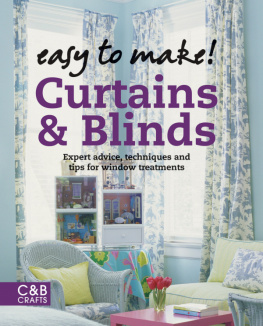


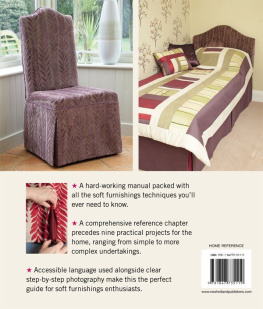
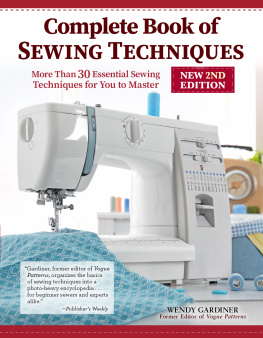


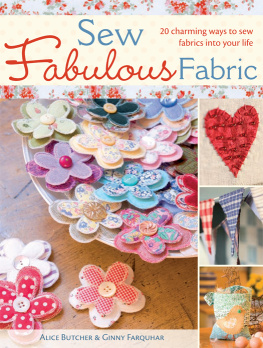
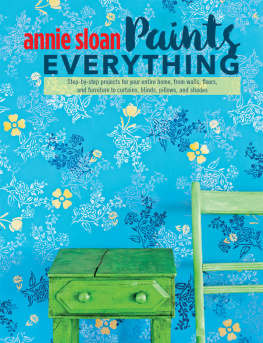
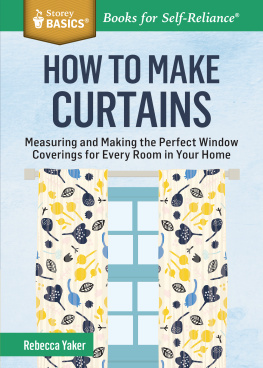



 @LoveCrafts_CB
@LoveCrafts_CB LoveCrafts HQ
LoveCrafts HQ





